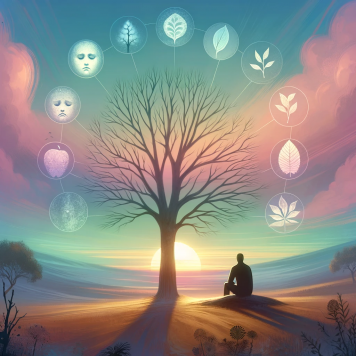Attending a funeral for a family or friend is often a familiar experience, with similar traditions and cultural influences shared through the generations. Culture ingrains the beginning and end of life, often with longstanding practices that make up the ceremony of saying goodbye.
Death is universal, but different countries and cultures have unique ways of mourning the loss of a loved one. These death and funeral rituals vary greatly, depending on the family’s religion, beliefs, and traditions. We’ve taken a look at some that may surprise or even inspire you.
What is a Death Ritual?
When a loved one dies, rituals often guide the family in how they lay the person to rest. Family and friends follow mourning practices and hold different events to honor the lives of their loved ones.
Throughout history, civilizations follow specific rituals and practices, often centering around burial or cremation, grief and mourning, and other ceremonies. Today, Western cultures (such as families in the United States) often choose interment in a grave or cremation for the person who has died. Additional events or customs provide the mourning or life celebration experience where friends and family can participate in honoring their loved ones.
While many death rituals are associated with religious practices, ceremonies often happen from a traditional or family perspective, and more and more, families have blended traditions or opt for alternative ways of celebrating a life. But whichever funeral rituals are followed or created, they can provide comfort for the family in their time of loss, creating an opportunity to find purpose and healing in their grief.
Death Rituals in Different Cultures
Some cultures have specific burial rituals, while other countries and cultures practice specific mourning rituals. Here are some of the unique death rituals around the world, and keep in mind, some may seem very different from what you’d expect:
- Tearing a Piece of Clothing: In Jewish traditions, immediate family members tear a piece of their clothing as a symbol of the loss and grief they are experiencing.
- Sky Burials: Although it may surprise you, an estimated 80% of Tibetan Buddhists choose sky burial instead of burial in the ground as a more organic way of returning the body to nature completely. This ancient death ritual ends with the body being left in an outdoor setting, typically on a hilltop, where birds of prey will consume it.
- Scattering at Sea: Hong Kong, for example, is densely populated, with limited burial grounds available. 90% of local families in Hong Kong choose cremation. Many people can’t or don’t want to pay for an expensive cremation niche, and it’s considered taboo to bring the ashes home. As a result, it’s popular to choose an ash scattering ceremony at sea.
- Burial Beads: South Korea also has limited space for burial, so families are creative about ways to honor their loved ones. A common practice is to press the cremated remains into colorful beads. Then, they make a display with the decorative beads in a bottle or urn.
- Church Bells: The sounding of church bells is a way to honor a loved one around the world, with different practices for the number of rings and the length of time the bells ring out over a community.
- Jazz Funeral: A blend of African and European culture brought the jazz funeral tradition to New Orleans, Louisiana, and other families in different areas. When the funeral procession happens, live musicians walk and play instruments--often sad songs at the beginning. After the burial, a post-funeral party happens with lively, merry music in celebration of the person’s life.
- Pyre Cremation: On the holy site of the Ganges River banks, Hindu cremation grounds work around the clock to provide cremation services for Indian families. The family wraps the loved one in bright, colorful fabric and performs religious rituals. Then, the body is carried on a bamboo stretcher to the cremation site.
- Dancing with the Dead: This death ritual in Madagascar happens five to seven years after the initial burial. The loved one's exhumation allows the family to strip the burial clothing and place them in fresh shrouds. Then a placement ceremony takes place to seal the crypt for another five to seven years. This practice is known as the “turning of the bones” or “dancing with the dead.”
- Hanging Coffins: In the northern area of the Philippines, a common death ritual is to carve a beautiful coffin, then place this coffin on the side of a cliff for burial. Before the loved one is placed in the casket, family members participate in certain ceremonies, such as seating the person in a “death chair” and covering them with a blanket.
Modern Death Rituals
Modern funeral practices often include strong cultural influences or threads of tradition in the ceremony. Here are some of the most common modern death rituals you might experience when attending an event in honor of a loved one:
- Funeral Procession: Often, the funeral services and burial sites are in different locations. When the funeral is over, pallbearers carry the casket to the hearse. This funeral car leads the way to the cemetery, with family and friends driving behind in a line.
- Handful of Earth: Family members watch as the casket is lowered into the ground. Then funeral attendees approach the casket one at a time to drop handfuls of soil onto the casket. This practice is common in many cultures, symbolizing the return of the person to the earth.
- Clothing: Dressing in black during the mourning period dates back to Roman times and continues in many cultures. In those cultures, wearing darker colors shows that the person is in mourning, while in other traditions, other clothing norms may apply to funeral rituals.
- Mourning: It’s common for a mourning period to occur for a specific time frame after the funeral. In some cultures, mourning is an outward expression of grief, such as wailing or crying. In other cultures, mourning is shown by wearing black or staying home for a few weeks or months after the funeral.
- Wake: While the wake death ritual dates back to religious ceremonies, this ritual can now be non-religious. During this time, friends and loved ones care for family members between the time of death and the funeral. These activities show a sign of devotion and love.
- Drive-Thru Funerals: While drive-thru funerals have been around for years, the popularity of this practice skyrocketed due to COVID-19 pandemic restrictions. This death ritual involves family and friends greeting the family through the window as they drive by in a car.
Your family can choose from a variety of death rituals, but remember the most crucial element of planning a funeral: choose the ceremonies and practices that best suit your preferences and family traditions. There isn’t a right or wrong way to honor your loved one, so focus on creating a memorable, personal ceremony or event that suits their values, their beliefs, and even their style or personality.

-article_image_details.jpg)
-banner.png)





